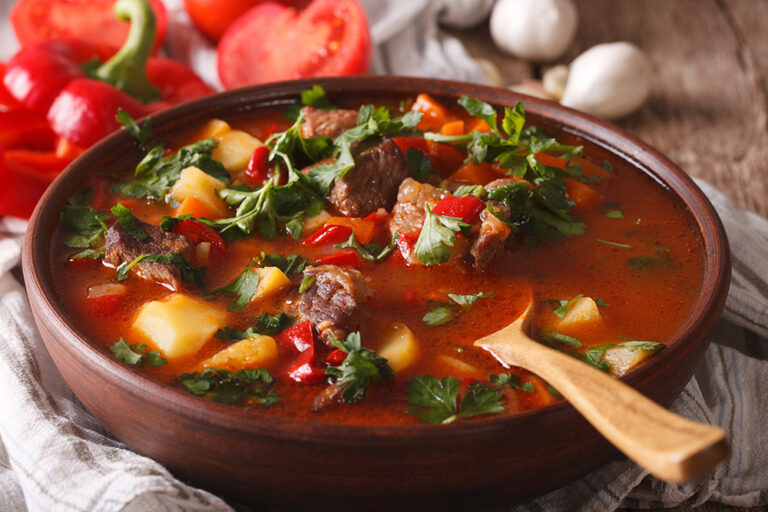Introduction: Hungarian cuisine and its regional diversity
Hungarian cuisine is known for its hearty and flavorful dishes, which are often based on meat, potatoes, and paprika. However, the cuisine of Hungary is not uniform, but rather varies significantly between regions. The country’s geography, history, and cultural influences have all contributed to the diversity of Hungarian cuisine.
Cuisine of Western Hungary: influenced by neighboring countries
The western region of Hungary, which shares borders with Austria, Slovenia, and Croatia, has been greatly influenced by the cuisines of these neighboring countries. For example, dishes like Wiener Schnitzel and goulash soup are popular in this region. Additionally, the use of sour cream, which is common in Austrian and Slovenian cuisine, is also prevalent in the western region of Hungary.
Cuisine of Eastern Hungary: influenced by historical traditions
Eastern Hungary, which includes regions like Transylvania and the Great Plain, has been influenced by the historical traditions of the Hungarian people. For example, dishes like pörkölt, a stew made with meat, onions, and paprika, and töltött káposzta, stuffed cabbage rolls, are popular in this region. These hearty dishes reflect the agricultural heritage of Eastern Hungary, which has historically been known for its livestock and grain production.
Cuisine of Central Hungary: the heart of Hungarian gastronomy
Central Hungary, which includes the capital city of Budapest, is often considered the heart of Hungarian gastronomy. The cuisine of this region is characterized by its rich and diverse flavors, influenced by the various cultural and culinary influences that have passed through the city over the centuries. Dishes like gulyásleves, a meat and vegetable soup flavored with paprika, and töltött paprika, stuffed peppers, are popular in this region.
Southern Hungary cuisine: the influence of Balkan flavors
The southern region of Hungary, which shares borders with Serbia and Croatia, has been influenced by the flavors of the Balkans. Dishes like lecsó, a stew made with peppers, tomatoes, and onions, and halászlé, a spicy fish soup, are popular in this region. The use of smoked meats and sausages is also common in Southern Hungarian cuisine.
Northern Hungary cuisine: the impact of Slovak and Polish cuisine
The northern region of Hungary, which shares borders with Slovakia and Poland, has been influenced by the cuisines of these neighboring countries. For example, dishes like halusky, potato dumplings served with sheep cheese and bacon, and klobása, a type of sausage, are popular in this region. The use of sour cream and sauerkraut is also common in Northern Hungarian cuisine.

